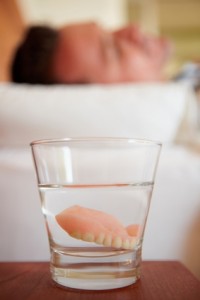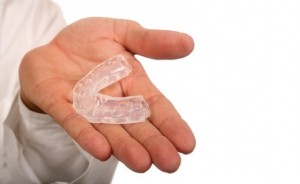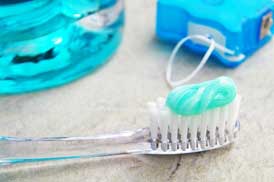Over the last few years there has been an increase or reported cases of MRSA infections. Many of my patients ask me about the risk of oral MRSA infections and how it can effect them. Our mouths are home to over 300 different types of bacteria.  In a healthy mouth, these bacteria work together to create a healthy oral environment. But, as in any other system, if things go awry and the balance becomes upset then we find different types of bacteria take advantage of this and begin to thrive.
In a healthy mouth, these bacteria work together to create a healthy oral environment. But, as in any other system, if things go awry and the balance becomes upset then we find different types of bacteria take advantage of this and begin to thrive.
So does the average person have MRSA in their mouth?
Studies have shown that the population that has the highest incidence of MRSA colonization are elderly patients in nursing homes as well as patients with advanced malignant diseases suffering from reduced salivary flow rate.
What can they do to reduce the amount of bad bacteria in our mouths?
MRSA tends to like to grow on the porous surfaces of dentures as well as being found in plaque in the mouth. Some studies have shown that a good way to clean MRSA infected dentures is with a chlorhexidine oral rinse as well as soaking the dentures in chlorhexidine for 10 minutes once a week. Dentures should be cleaned daily with a stiff brush and soap and water, not toothpaste. And even, if you wear dentures you should be cleaning your gums and remaining teeth as well. Some studies also suggest microwaving your dentures for 3 minutes. However, I don’t suggest this if you have any portion of your denture that is metal.
What kind of risks are there if you have MRSA in your mouth?
There are no studies that offer clear associations of MRSA colonization in the mouth causing systemic and dental problems. Although, the bacteria having been found in some orofacial abscesses as well as some infections located on the gingiva and corners of the mouth commonly associated with denture wear. So although there have been few instances of this type of bacteria found in oral infections the concern is for the potential for these strains to re-colonize at other body sites or become a source of cross-infection to other patients or hospital/nursing home staff.
The ecology of Staphylococcus species in the oral cavity; A. J. Smith, M. S. Jackson and J. Bagg Staphylococcus aureus in the oral cavity: a three-year retrospective analysis of clinical laboratory data; A.J. Smith, D. Robertson, M. K. Tang, M. S. Jackson, D. MacKenzie & J. Bagg MRSA infection; K. Valand & P.M. McLoughlin
]]>




 The studies were spurred on by the increase in consumption of sports and energy drinks, especially by adolescents. The study warned that both sports drinks and energy drinks have pH levels that are at a level of acidity that can cause demineralization or weakening of the enamel. Also, they found that they both contain citric acid, included to help improve the taste and shelf life of the drink, which can also have an effect on enamel. The study showed, that although both sports and energy drinks are acidic enough that if excessively consumed they can cause damage to dental enamel, energy drinks have a “significantly greater potential for enamel dissolution than sports drinks”.
The study also brought to light some interesting information:
The studies were spurred on by the increase in consumption of sports and energy drinks, especially by adolescents. The study warned that both sports drinks and energy drinks have pH levels that are at a level of acidity that can cause demineralization or weakening of the enamel. Also, they found that they both contain citric acid, included to help improve the taste and shelf life of the drink, which can also have an effect on enamel. The study showed, that although both sports and energy drinks are acidic enough that if excessively consumed they can cause damage to dental enamel, energy drinks have a “significantly greater potential for enamel dissolution than sports drinks”.
The study also brought to light some interesting information:
 diagnosed with this sleep disorder but have not sought treatment. And, many do not fully understand exactly what sleep apnea is.
Sleep apnea is a condition where an individual stops breathing for ten seconds or more during sleep. This typically can happen between ten and sixty times in a single night. The two types of sleep apnea are: Obstructive sleep apnea, which is the most common type of apnea; and Central sleep apnea. Obstructive sleep apnea is due to relaxation of the muscles around the throat causing an obstruction of air flow in to the nose and mouth. And, Central sleep apnea is caused by a disruption in the signal from the brain that controls breathing.
Besides not being able to get a good nights rest,
diagnosed with this sleep disorder but have not sought treatment. And, many do not fully understand exactly what sleep apnea is.
Sleep apnea is a condition where an individual stops breathing for ten seconds or more during sleep. This typically can happen between ten and sixty times in a single night. The two types of sleep apnea are: Obstructive sleep apnea, which is the most common type of apnea; and Central sleep apnea. Obstructive sleep apnea is due to relaxation of the muscles around the throat causing an obstruction of air flow in to the nose and mouth. And, Central sleep apnea is caused by a disruption in the signal from the brain that controls breathing.
Besides not being able to get a good nights rest, 